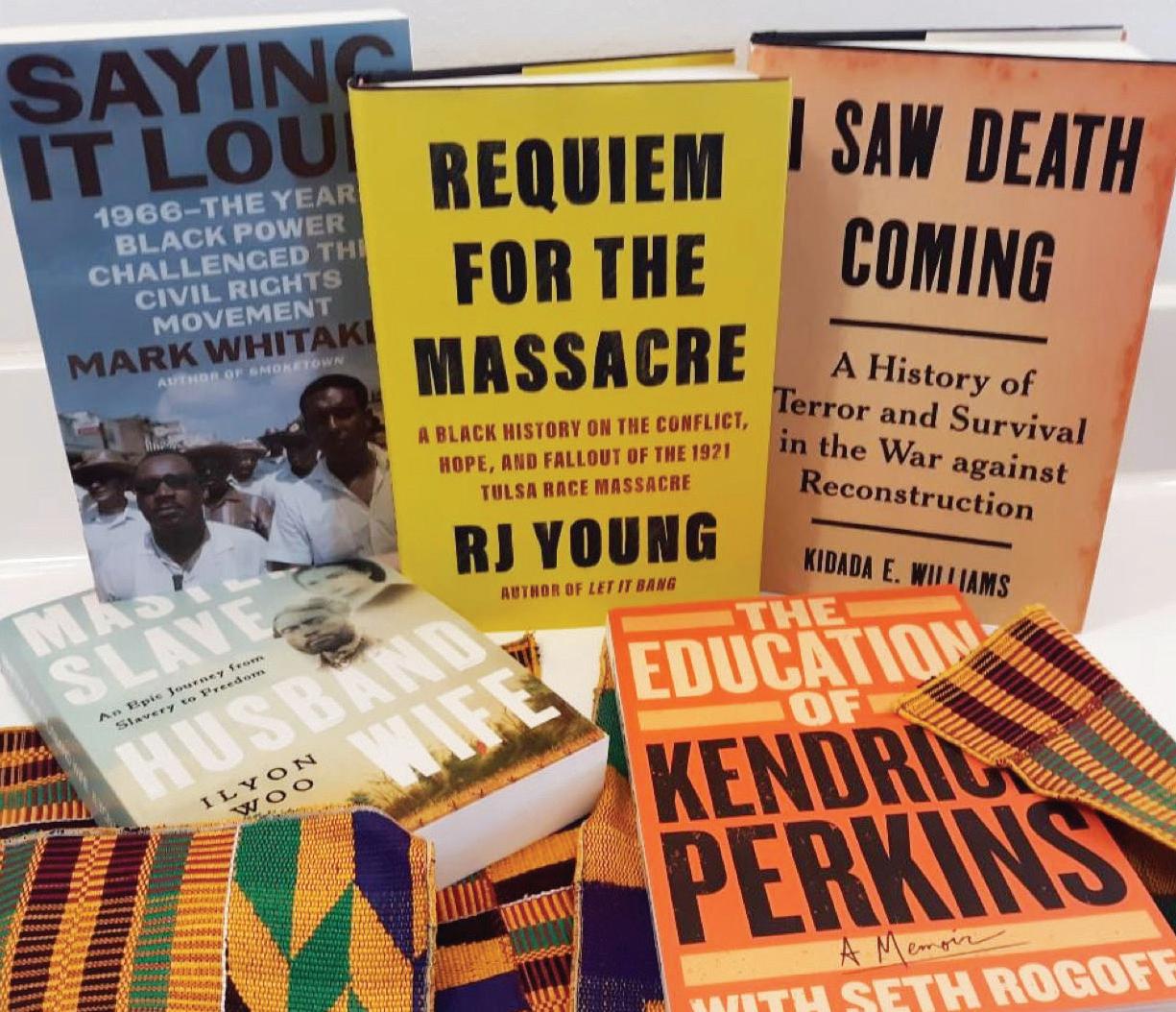
3 minute read
More Books Touch on Different Eras as Black History Month Nears End
By Terri Schlichenmeyer
The Bookworm Sez, LLC
The month of February has whipped by so fast that you almost missed it. Its true that the month is short compared to the other months, but no worries. There’s still a lot remaining, surely enough left to catch one of these great Black History Month books...
It’s been more than a century since the Tulsa Race Massacre, and it still seems like there’s much to learn about it. in “Requiem for the Massacre” by RJ Young (Counterpoint, $27.00), you’ll read about how descendants of survivors marked the centennial anniversary of that day in 1921, how officials are reckoning with what happened, and... what happened.
If you examine the decades between Rosa Parks’ refusal to give up her bus seat and Black Lives Matter, you can clearly see how activism has changed with the times.
Author Mark Whitaker writes about one year of it in “Saying It Loud” (Bloomsbury, $29.99). Set in 1966, this book shows how the Black Power movement changed the way young Black Americans fought for Civil Rights, and what it means today. This reads like a novel, and it should be on your bookshelf.
Readers who love sports will want “The Education of Kendrick Perkins” by Kendrick Perkins with Seth Rogoff (St. Martin’s Press, $29.99). Here’s Perkins’ story, from his childhood in Beaumont, Texas, to his budding love of basketball, his NBA career, and playing with the sport’s biggest and best-known names. This is a fan’s book, perfect for any season.
If a real-life thriller is more to your liking, then look for “Master
Slave Husband Wife: An Epic Journey From Slavery to Freedom” by Ilyon Woo (Simon & Schuster, $29.99). In 1848, Ellen and William Craft left the plantation on which they were enslaved, and they slipped away North. Here’s how: Ellen masqueraded as a rich white man during their flight, while her husband acted as the man’s slave. Needless to say, their audacious run was hailed by Frederick Douglass and other Black luminaries of their day; most astoundingly, that’s not the end of this heart-pounding story.
You gotta read this book.
And speaking of freedom, “I Saw Death Coming” by Kidada E. Williams (Bloomsbury, $30.00) is a book about the years after the Civil War and how Reconstruction affected the newly free and their families. Through genuine stories of several formerly enslaved people, both men and women, Williams shows how just getting by day-to-day was a struggle: with the rise of the Ku Klux Klan, merely existing was dangerous. And perhaps one of the most frightening things of all might have been the dawning realization that the government offered limited help, if at all. This is a fascinating book, perfect for historians and Civil War buffs.
If these books are not enough for your pleasure or learning, be sure to ask your favorite librarian or bookseller for help. They can show you hundreds, if not thousands, of books that will enlighten, teach, entertain, or shock you. These are books you need to read now, or soon – because knowing Black history requires more than just a month.
A new study of Silicon Valley wealth, income and other economic measures shows vast disparities in one of the country’s wealthiest regions, with the top 10% of households holding 66% of the investable assets in the region last year.
In Santa Clara and San Mateo counties, just eight households held more wealth than the bottom 50% (nearly half a million households), according to the Silicon Valley Index, an annual report by the Silicon Valley Institute for Regional Studies, the research arm of Joint Venture Silicon Valley.
“We live in a capitalist system that is based on markets,” said Russell Hancock, chief executive of the San Jose-based think tank. “There’s rules to the game; the rules are fair. In Silicon Valley, we have some of the world’s biggest winners.”
Hancock added that the report highlights the need for more investments in education and “equipping people for success.”
The institute defines Silicon Valley as Santa Clara and San Mateo counties, as well as parts of Santa Cruz and southern Alameda counties. The think tank also includes San Francisco in some of its metrics. The report focused solely on data from Santa Clara and San Mateo counties for its wealth analyses.
Wealth inequality in Silicon Valley is more pronounced than in the U.S. overall, or globally, with the top 1% of households holding 48 times more of the total wealth than the bottom 50%, according to the report. That compares to 23 times nationally and globally, the report said.
Ultra-rich
The report estimates Silicon Valley’s aggregate household wealth is nearly $1.1 trillion, when it counts ultra-high net worth individuals.
The report marks the first time the think tank published wealth estimates that include data on these ultra-high net worth individuals, who the institute defined as those with net investable assets of $30 million or more.
Such assets are those that are held in cash, or can easily and quickly be converted into cash,
Continued on page 8
James E. Roberts-Obayashi Corporation is seeking proposals from









